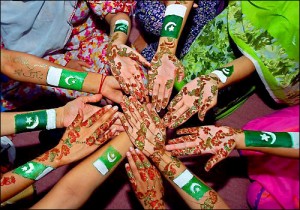 Pakistan Population 2013
Pakistan Population 2013
The population of the Islamic Republic of Pakistan is estimated to be about 180.44 million people, which is an increase of about 2.1% from the last record of the population. The population had been less than both the population of Bangladesh and the United States of America. However, in the mid 1970s, the population of Pakistan exceeded the population of Bangladesh, but is still less than the United States’ population. Based on the total land area and the total population of the country, the population density is estimated to be about 555 people per square mile.
Demographics of Pakistan
The population of the Islamic Republic of Pakistan is comprised of a variety of unique ethnic groups. The largest group would be the Punjabi group, which makes up around 44% of the population. The Punjabi group speaks the most widely spoken native language, Punjabi. A few of the other large ethnic groups include Pashtun, Baluchi, and Sindhi. The official language of the country is Pakistani English, which is used in all official activities.
Religion in Pakistan
The major religion in the Islamic Republic of Pakistan is the Islamic religion, making up over 96% of the population. In fact, Pakistan contains the second highest Muslim population in the entire world. Of these Muslims, the majority of them consider themselves to be Sunni Muslims. Only about 15% of them identify as Shi’a Muslims. Christianity and Hinduism only make up a little over 1.5% of the population each.
Sports in Pakistan
The most popular sport in the Islamic Republic of Pakistan happens to be the sport of cricket. Pakistan is widely played by people of all different skill levels. The country has also won quite a few international cricket events. A few other big sports in the country are field hockey, squash, and polo.
Food in Pakistan
Pakistani cuisine is a refined blend of various regional cooking traditions of South Asia. Pakistani cuisine is known for its richness and flavor. The traditional food of Pakistan is the Tandoori and Biryani. The tandoori is baked marinated lamb, beef, or chicken that is cooked in a clay oven. The Biryani is rice that is cooked in fish or meat sauce with cinnamon, cloves and other spices. At its simplest, Pakistani food today consists of staple ingredients which are cheap and abundant. Wheat and other flour products are the mainstay of the diet, one familiar form being chapati, an unleavened bread akin to a Mexican tortilla. This is made with dough prepared from whole wheat flour. Another basic Pakistani food is lassi, milk from which curds and butterfat have been removed. Vegetables, usually seasonal, lentils are commonly used. Families with larger incomes eat more meat, eggs and fruits. And the more affluent cook with ghee, which is clarified butter, instead of with vegetable oil.
Pakistan Population Growth
Historical Population of Pakistan
Over the last half of a century, the population of the Islamic Republic of Pakistan has historically increased. However, the population around the mid 1970s began to increase at a faster rate.
| Year | Population (millions) |
| 1960 | 45.92 |
| 1965 | 51.99 |
| 1970 | 59.38 |
| 1975 | 68.48 |
| 1980 | 80.49 |
| 1985 | 95.47 |
| 1990 | 111.8 |
| 1995 | 127.3 |
| 2000 | 144.5 |
| 2005 | 158.6 |
| 2010 | 173.6 |
| 2011 | 176.7 |
Projected Population of Pakistan
The population of the Islamic Republic of Pakistan is expected to portray the same trends that it has shown over the last half of a century. The population will continue to increase at a high rate due to the high birth rates and the low death rates. The birth rates will range from about 26.3 births per 1000 people to about 14.3 births per 1000 people. In contrast, the death rates will range from about 6.9 deaths per 1000 people to about 8.1 deaths per 1000 people. Despite the fact that the net migration rates will be negative throughout the next 37 years, the population will still increase due to the high birth rates.
| Year | Population (millions) | Percent Increase |
| 2015 | 189.548 | 5.0% |
| 2020 | 205.204 | 8.3% |
| 2025 | 220.393 | 7.4% |
| 2030 | 234.158 | 6.2% |
| 2035 | 246.394 | 5.2% |
| 2040 | 257.190 | 4.4% |
| 2045 | 266.443 | 3.6% |
| 2050 | 273.895 | 2.8% |



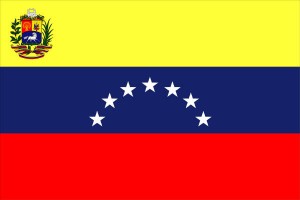 Venezuela Population 2013
Venezuela Population 2013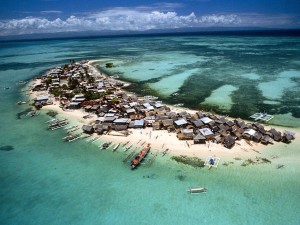 Philippines Population 2013
Philippines Population 2013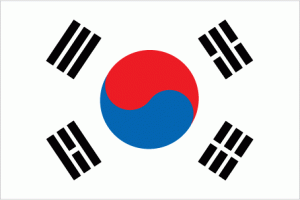 South Korea Population 2013
South Korea Population 2013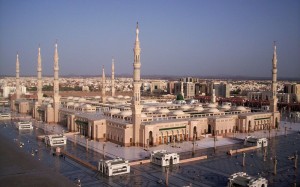 Saudi Arabia Population 2013
Saudi Arabia Population 2013